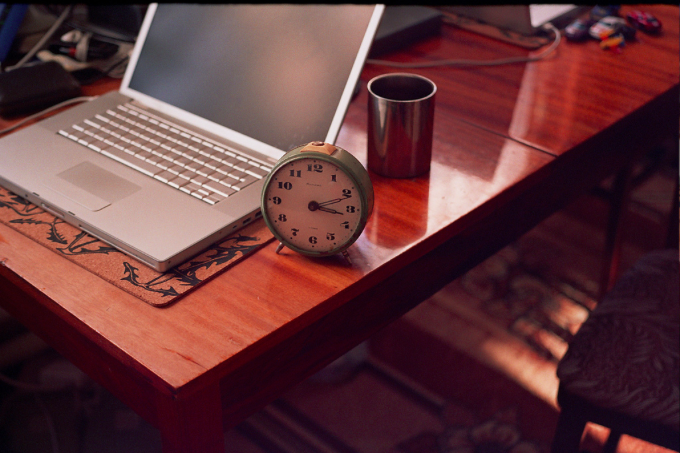I get it. You’re a coach and you lead an ultra busy life.
Your days feel like they’re one long task list as you move from one thing to another. You have your clients to think of not to mention everything that needs to get done so you can have a thriving coaching practice.
To say that it’s difficult to find the right balance would be a gross understatement. You often feel like you haven’t achieved the results you were hoping for in any given day.
It’s frustrating and disappointing, yes, but all you need to know is one powerful secret that can make all of these issues a thing of the past…
It’s called “fixing your daily routine.”
When your daily routine happens on a whim, trouble arises. You can’t have a day filled with attending to whatever happens to be in front of you at any given moment (the ding of a text message, the phone ringing).
Your daily routine needs to be pre-planned. You need to figure out what you need to do and when to do each of your tasks, quickly, effectively and for maximum results with minimum effort. Creating this type of daily routine involves mastering an art and a subtle science. A daily planner can help you manage your time more effectively. It allows you to organize your daily activities into a smooth and efficient schedule."
Yes, curve balls will undoubtedly come your way. You will get thrown off your routine. That’s just the way life is.
But deliberately crafting a daily routine that works for you will leave you more organised, energised and productive throughout the day. So, if you’ve been struggling mightily to get things done lately, know that you CAN make fundamental changes and be more productive and happy in your daily life.
Here are 5 steps that will help you to strive… not for perfection, but for excellence.
Step #1 – Get real

Before you do anything else, you need to get real. Evaluate the daily routine you’ve got going on right now. Do this by tracking everything that you do, everyday, for 5 to 7 days.
Go old school and use a pen and paper or pick a time-tracking app. Either way, make sure you capture all of your tasks. This includes the time you spend on your commute, working, eating, watching television and everything in between.
You’ll notice that not everyday looks the same, but this exercise will give you a great jumping off point on what your average week actually looks like.
Now that you have a better idea of what you do regularly, you can take the next step and restructure your schedule to make it more optimal.
Step #2 – Be aware of your energy

Think about your energy levels throughout an average day. Ask yourself, “When do I do my best work?” Is it at the crack of dawn, mid-day or late evening? Most people find that they are the most productive in the morning because they feel energized and enthusiastic after a good night’s rest and breakfast.
So, it’s best to complete tasks that require critical or creative thinking and troubleshooting, as early in your day as you can manage. When midday rolls around, you’ll find that your energy levels start to dip. But this doesn’t mean that you can’t use the time, effectively.
Anticipate your midday downward spiral and set that time aside for mundane tasks like answering emails, setting appointments, doing online research and running errands. You might think you can’t get much out of your evenings because you’re tired and ready to call it a day.
But there’s still time to be productive. Take a few moments to do some planning and prep for the next day. You’ll thank yourself later for making this extra effort the night before.
Step #3 – Unitask

You might believe that the ability to divide your attention across multiple projects is an awesome way to knock your to-do list out of the park. It might sound incredibly productive but multitasking has been shown to do more harm than good.
It’s been found that people who multitask don’t perform as well as those who focus on just one task.
Even worse, multitasking may even be detrimental to your health in the long term. Researchers found that multitaskers struggle with organising their thoughts and filtering out unimportant information. Multitasking also reduces efficiency and performance because your brain can only focus well, on one thing at a time.
The human brain just isn’t designed to do 5 things at once. So starting today, tell yourself that you’re a unitasker. Aim to do one task at a time and to do it effectively and quickly.
You’ll be surprised at how much more you’ll actually get done when you work this way.
Step #4 – Do only what matters

In this world of excess, it’s hard to believe that there are times when limiting yourself is the best bet. But it is when you’re dealing with a task list. Most people overestimate what they can do in a day and underestimate what they can do in a lifetime. I think it was Tony Robbins who said something to that effect.
So, don’t tell yourself that you have the superhuman ability to achieve a 100 different, complex tasks in less than 24 hours.
You can’t. No one can.
What can you do instead? Start slashing your list so you’re left with the essentials. Take time to review your to-do lists with the intention of eliminating tasks or simplifying them. A great way to eliminate a task from your personal list is to delegate it to someone else. Do what only you can do. Nothing more.
As for simplifying your list…there are just two letters that stand between you and a life of overwhelm and chaos…“N” and “O”
Learn to say “no” and mean it. Know your goals for the day, week and month. Your daily tasks need to move you closer to those goals. If they don’t, they have to go. Your daily to-do should be made up of just 3 main essential tasks and a small batch of less important tasks.
And these less important tasks —making calls, writing emails, doing paperwork — done in batch processing. This means that you shouldn’t be doing them a bit at a time, throughout the day. Instead, only do them once or twice a day.
Remember, you don’t need a huge to-do list to be productive. You need to do stuff that matters.
This is why limiting yourself to the essentials can help you sort out not just your daily routine, but your life.
Step #5 – Go off track

Does the word “routine” create resistance? Do you feel like when you’re on a routine you’re being locked into a life of nothing but hard work and strife? You don’t have to be the dull person who’s all about work and no play. When you have nothing but endless work with no payoff, you’ll soon find yourself falling off the track that leads to success.
Avoid this by consciously going “off routine” when you can. Ditch your daily tasks and opt for fun activities instead. Catch a movie on a weekday afternoon, visit a friend in the middle of the day, read a great book on a Monday morning or binge-watch your favorite TV show over a weekend.
These weekly infusions of happiness or “me times” are important periods of recovery, that are essential to your happiness and continuous productivity. It’s not a crime to have a bit of fun whenever you can but don’t go overboard. Keep tabs on how and when you go off track from your normal routine.
As a general rule, allow yourself to dive into fun activities as a reward for completing a meaningful or productive task. The right ratio for work vs reward is different for different people. Go ahead and set a ratio that feels right for you. For starters, you could try a 3 to 1. So this would have you working for three hours and then rewarding yourself with an hour of fun.
You might find yourself resisting this work/reward system at the start but it’s a big leap toward creating a more effective daily routine. Don’t skip it.
These 5 steps will help you craft a powerfully effective daily routine and you can adapt the details so it works for you and your unique lifestyle. Make sure you don’t start on a new routine and give up on it in a day or two. You need to try it on for size, for a couple of weeks, at least. This gives you time to feel into your new routine and see if it is makes sense.
An initial sense of discomfort could be just natural resistance, acting up. After all, nobody likes change. When you’ve completed a test run, assess your daily routine. Make adjustments if needed.
The trick to making it all work and pulling it together is to remain flexible, while sticking to the overarching pillars and routines that are meaningful to you.
Try it. After a while, you’ll wonder how you ever managed without your powerhouse daily routine.
Join your tribe at the Evercoach by Mindvalley group for more content to support your journey towards becoming an extraordinary coach, teacher, entrepreneur and change-maker.